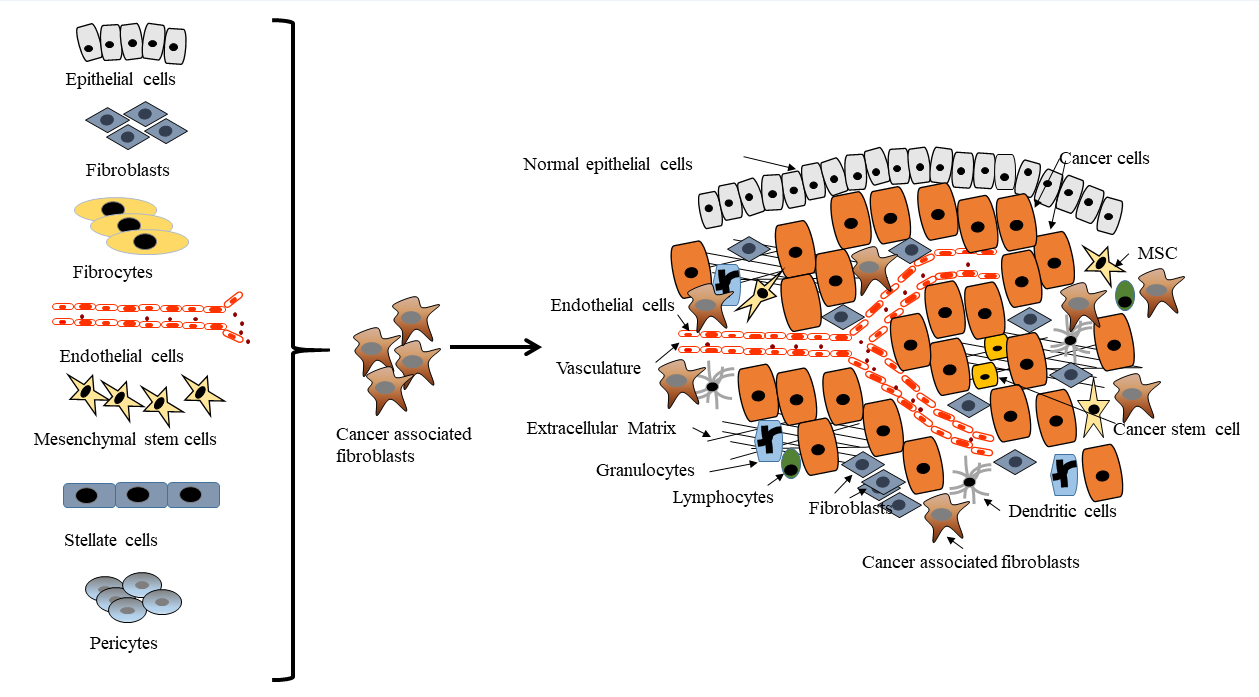Current therapeutic strategies targeting cancer cells within solid tumors have displayed limited success owing to the presence of non-cancer components referred to as the tumor stroma within the tumor microenvironment (TM). These stromal cells, extracellular matrix and blood vessels influence cancer cell response to therapy and play key roles in tumor relapse and resistance. Of the stromal cells present in the TM, a lot of attention has been given to cancer-associated fibroblasts (CAFs) as they are the most abundant and are important in cancer initiation, progression and therapy resistance. In this updated review I emphasize the role of CAFs in the regulation of tumor cell behaviour and reveal how CAF-derived factors and signaling influence tumor cell heterogeneity and development of novel strategies to combat cancer. To investigate the expression of CAF markers in tumor tissues versus normal tissues, transcriptomic data from The Cancer Genome Atlas (TCGA) and the Gene Expression Profiling Interactive Analysis (GEPIA) databases was used. Bioinformatic analysis reveals differential expression of CAF markers in several cancer types, underscoring the need for further multiomics and biochemical studies on CAFs, CAF subsets and markers. Differences in CAF markers’ expression could be due to different cellular origins as well as the effect of cancer-specific tumor microenvironmental effect on CAFs. Lastly, I present recent advances in therapeutic targeting of CAFs and the success of such endeavours or its lack thereof. It is recommended that for patients’ outcomes to improve, cancer treatment be combinatorial in nature, targeting both cancer cells and stromal cells and interactions.

